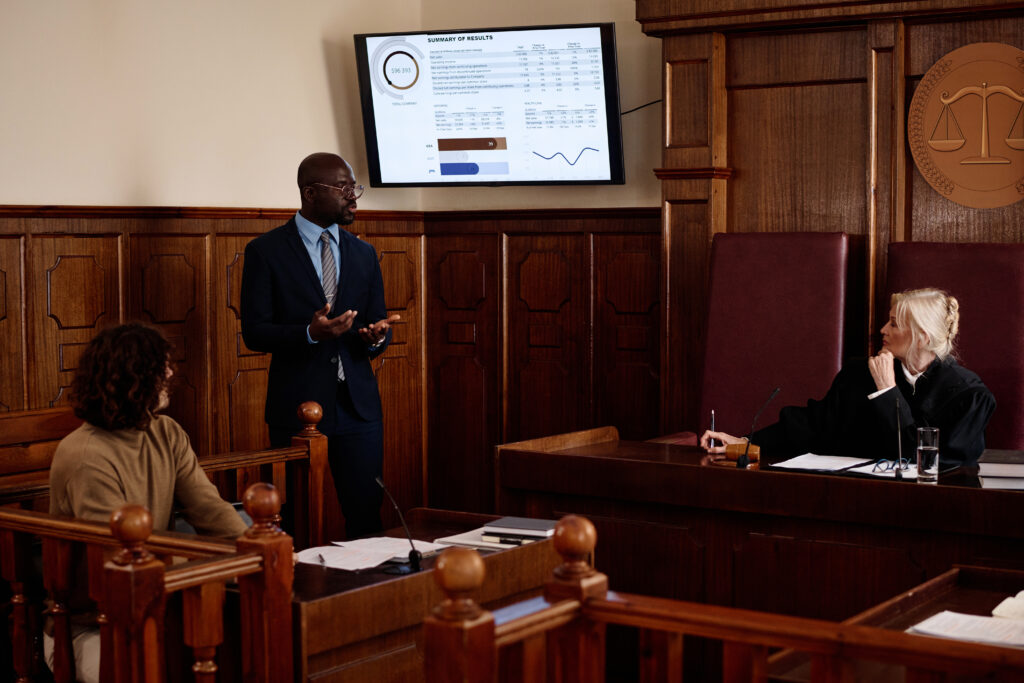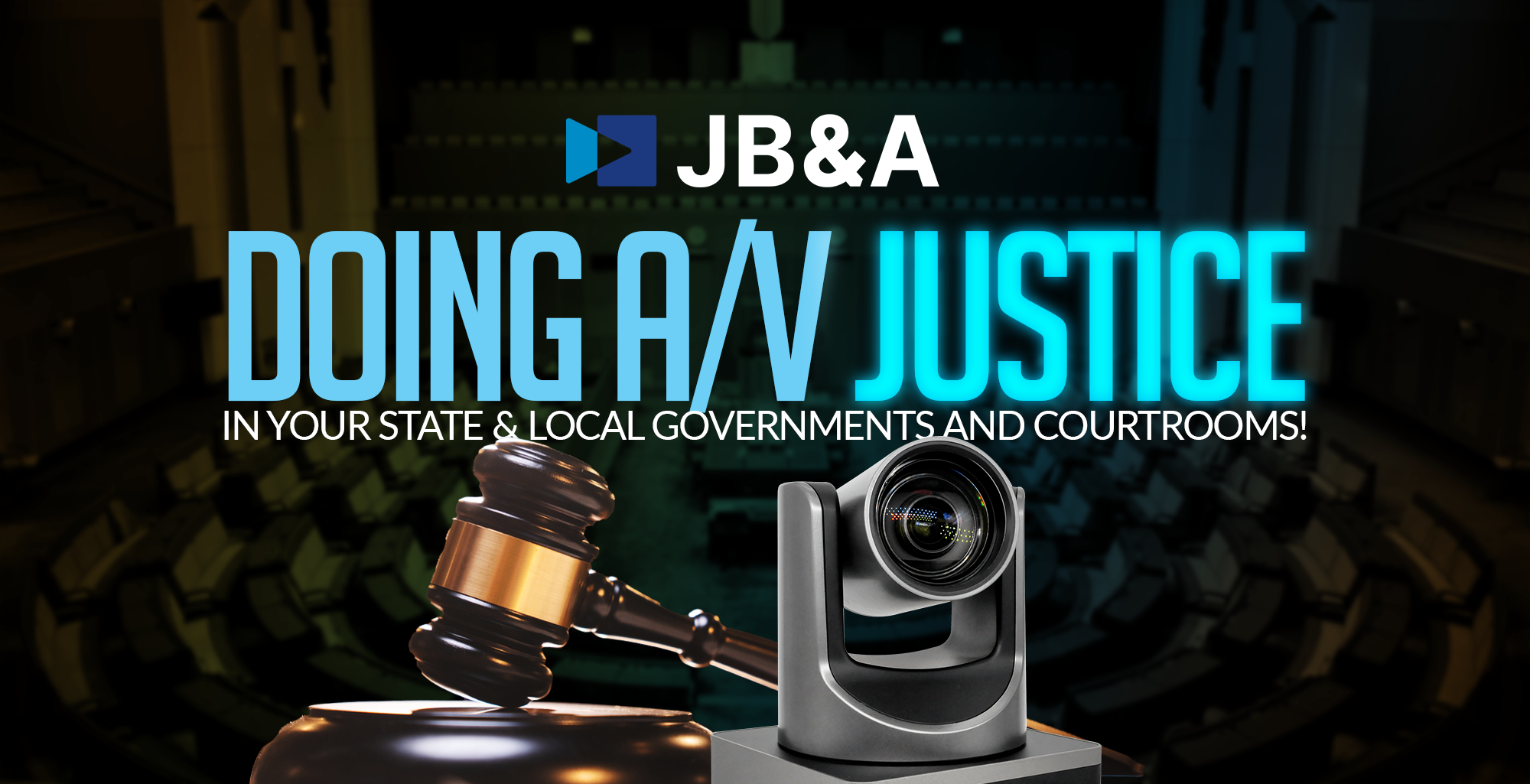Why is broadcast and A/V technology within State & Local Governments and Courtrooms important?
In today’s “digital age,” everyone is upgrading their spaces to have better A/V and broadcasts. We see schools becoming hybrid environments, businesses becoming their own production studios, and houses of worship becoming concert venues. Having better tools in your space is always a good idea, but not everyone is quick to adapt. One of the verticals that can greatly use better tools but seldom take full advantage of everything available is state and local governments and courtrooms. Okay, I know that is technically two, but they go hand in hand, so bear with me. There are indeed a lot of facilities that have already been making improvements and upgrades, but there are often areas that are missed. For those who have made the jump, they have noticed enhancements in transparency, efficiency, and accessibility, which are crucial in these important settings. Let’s delve into the role of A/V and broadcast technology in government facilities and courtrooms, who fits where, and address some challenges that come with adapting.
1. Livestreaming and Remote Interviewing
In recent years, advancements in A/V technology have allowed for remote interviewing and live streaming of proceedings in state and local governments and courtrooms. Clear audio and crisp video is the key to success here. There are a lot of different companies we carry that fit, but it comes down to cameras, mics, and speakers. This technology enables remote appearances of witnesses, experts, and even defendants. The benefits are considerable, including cost savings, improved access to justice, and enhanced security.
For instance, the Superior Court of California, Riverside County, adopted remote video conferencing to conduct hearings, reducing the need for physical presence and improving accessibility for all parties. However, the implementation of these technologies came with challenges, such as security and privacy concerns. To address these issues, secure and encrypted communication channels and stringent privacy controls are essential.
2. Digital Signage versus Presentation Displays
Digital signage and presentation displays have become integral tools for information dissemination within government buildings and courtrooms. Digital signage allows for dynamic content delivery, while presentation displays, such as projectors, effectively scale to ensure clear visibility of critical information. Both have their advantages, and both can be deployed in many different scenarios. A projector can be a nice addition for viewability, but a display on a cart is convenient for portability. We carry many different display and mounting options, such as Unilumin, Barco, Christie, Draper, Peerless, Bluefin, and more…

In the end, proper planning and integration of these technologies within government buildings and courtrooms are crucial for their effective use. It’s also important to conduct a cost-benefit analysis, considering the long-term value and return on investment (ROI). While there may be an initial investment, the benefits in terms of improved communication, enhanced public access, and streamlined operations outweigh the costs.
3. Sound Reinforcement
Back to audio. Sound reinforcement technologies help ensure that communication is crisp and every word is heard, which is particularly important for the fair administration of justice. Modern sound reinforcement technologies, including high-quality microphones and advanced sound processing, enhance the quality of audio in large spaces. Thanks to our sister company, The Music People, we have access to distribute an incredibly large selection of audio, but Shure, Qsc, and JBL are some of my favorites.
To maintain the integrity of sound systems, best practices in installation, proper use, and regular maintenance are essential. Follow the directions, don’t blow your speakers, and dust frequently. Keeping these systems in optimal condition ensures clear communication, which is critical in these settings.
4. Auto-Tracking and Auto-Switching Solutions
Auto-tracking and auto-switching technologies are making courtrooms and government meetings run smoother and simpler than ever. They provide dynamic camera coverage and effortless switching between sources, keeping viewers engaged and ensuring efficient proceedings. Pretty much every PTZ camera has auto-tracking these days, but Lumens is a standout for their focus on different styles of solutions like CamConnect and the LC series.
Automation is wonderful and makes systems easy to use, but there are challenges, including calibration, equipment compatibility, and personnel training. Addressing these challenges requires careful planning and coordination between technology providers and end-users.
5. Future Trends
The A/V landscape within government settings and courtrooms is continually evolving. Emerging technologies, such as virtual reality (VR) courtrooms and advanced AI-driven transcription services, are expected to further transform these environments. It is always a good idea to future-proof when possible and install the newest technology. Stay tuned to JB&A Central so you can be kept in the loop on what’s new.
The incorporation of modern Broadcast and A/V technology within state and local governments and courtrooms is not just a luxury but almost a necessity. These technologies enhance transparency, efficiency, and accessibility, ultimately serving the public interest by providing improved services and access to justice. With careful planning, effective solutions, and a commitment to embracing future advancements, government settings and courtrooms can leverage the power of A/V and broadcast technology to transform the way they operate and serve the community.



